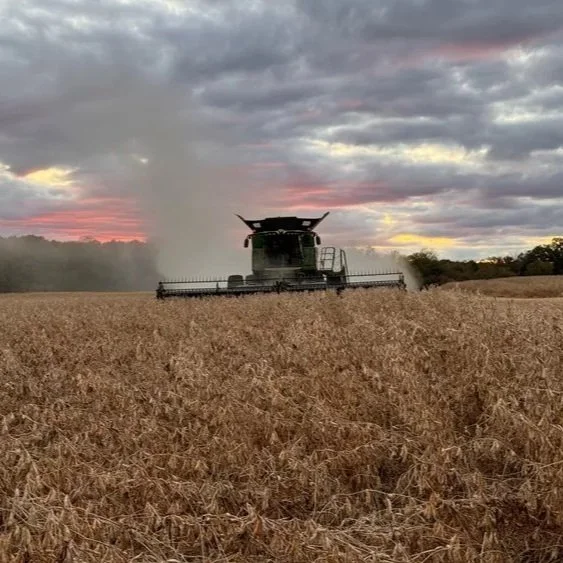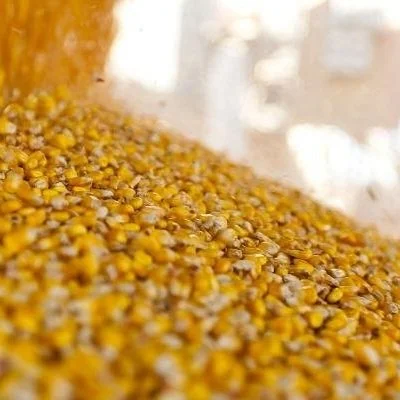Soybean production guidelines are prepared by LSU AgCenter cooperating personnel from Louisiana Agricultural Experiment Station researchers and by Louisiana Cooperative Extension Service specialists.
Read MoreTo manage johnsongrass, a noxious weed that crowds out cotton and sickens horses, farmers have tried herbicides, burning and hand-pulling. Now, researchers at University of California, Davis, have developed a more high-tech weapon against the invasive weed: artificial intelligence and machine learning.
Read MoreThis report also includes Marketing Year price projections for corn, cotton, rice and soybeans.
Read MoreLouisiana’s abrupt transition this year from one of the wettest states to one of the driest has had crippling repercussions for its farms and forests.
The state’s agricultural and timber industries have suffered nearly $1.7 billion in losses from the long-running drought and recent bouts of record high temperatures, according to a new report from Louisiana State University researchers.
Read MoreFarmer-leaders of the United Soybean Board (USB) elected Steve Reinhard from Ohio as the 2024 chair and 10 additional farmer-leaders to serve on the Executive Committee during the USB December meeting in St. Charles, Missouri.
Read MoreThe primary function of the Louisiana Farm Bureau Federation is to ensure farmers can continue to feed a growing world. One of the ways it does that is by helping move agricultural products through the Louisiana Farm Bureau Marketing Association. In this episode, Karl Wiggers sits down with grain marketing specialists Greg Fox and Grayson Close to talk about the company and how they help farmers across Louisiana sell their crops at the best price at the best time.
Read More“When is the best time to spray fungicides?” is a question that is central to managing many plant diseases. A good answer, however, is rarely simple and several factors, from the economics of fungicide applications to the biology of the pathogen, need to be considered.
Read MoreThe 2023 OVT Trial was planted at these LSU AgCenter research stations: Central Station, Baton Rouge; Dean Lee, Alexandria; Iberia, Jeanerette; Macon Ridge, Winnsboro; Northeast, St. Joseph; Red River, Bossier; and Rice, Crowley. The OVT at the Rice Research Station was not harvested due to adverse growing conditions.
Read MoreZ-Series soybeans, the newest seed series from Pioneer, will be available in limited quantities in 2024 and commercially available in 2025.
The new class of seeds will offer significant agronomic advancements including improved disease tolerance for SDS, brown stem rot, white mold, and iron deficiencies. Z-Series seeds will also expand Peking and Phytophthora stack varieties and will increase yields through improved soybean germplasm.
Read MoreLouisiana corn for grain production is forecast at 119 million bushels, unchanged from the October 1 forecast but up 61 percent from 2022. Based on conditions as of November 1, yield is expected to average 175 bushels per acre, unchanged from last month but up 5 bushels from last year. Producers expect to harvest 680,000 acres of corn for grain, up 245,000 acres from 2022.
Read MoreLouisiana was the first state to wrap up soybean harvest for the week ending Oct. 29, and remains the only state to have finished harvesting soybeans for the week ending Nov. 5, USDA reports.
Mike Strain, commissioner of the Louisiana Department of Agriculture and Forestry, says that heat and drought resulted in some poor yields for the state’s first batch of soybeans, averaging 10 to 12 bushels per acre (bpa).
Read MoreThe U.S. Department of Agriculture announced the appointment of four new farmer-leaders to serve on the United Soybean Board (USB). In addition, 15 farmer-leaders were reappointed. In total, 22 leaders and alternates will serve three-year terms and one alternate will serve a two-year term. These USB Directors from 18 states will be sworn in for service during the USB December Meeting in St. Charles, Mo.
Read MoreWith the U.S. harvest concluding, markets will focus on South American weather forecasts and crop progress. For the 2023/24 marketing year, Brazil and Argentina are projected to account for 53% of global soybean production and 15% of global corn production. By comparison, the U.S. produces 32% of the world’s corn and 28% of the world’s soybeans.
Read MoreIf you see handfuls of soybeans scattered about the field as you harvest they might not look like much, but small numbers can add up to huge losses quickly.
Read More“When is the best time to spray fungicides?” is a question that is central to managing many plant diseases. A good answer, however, is rarely simple and several factors, from the economics of fungicide applications to the biology of the pathogen, need to be considered.
Read More














